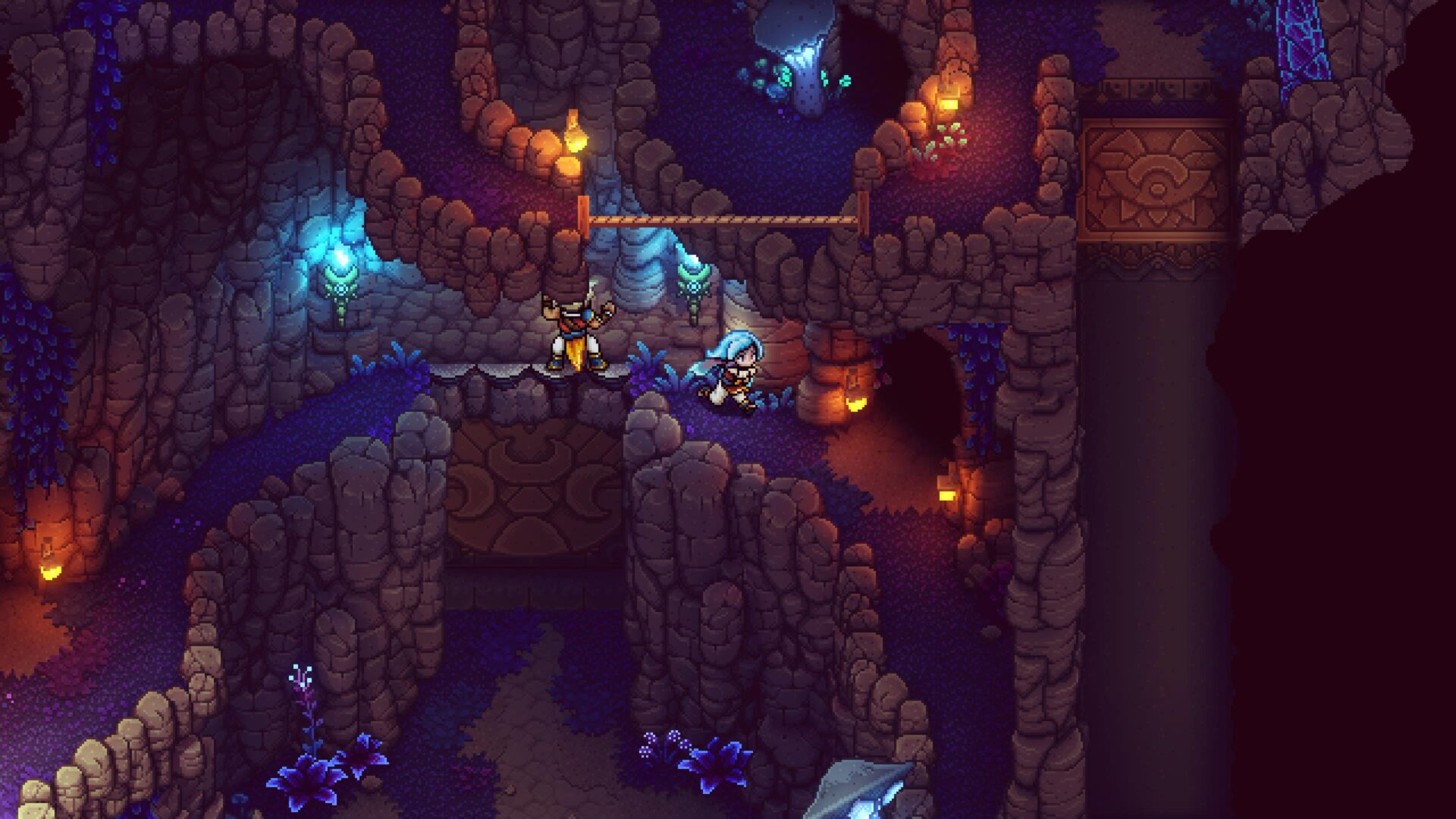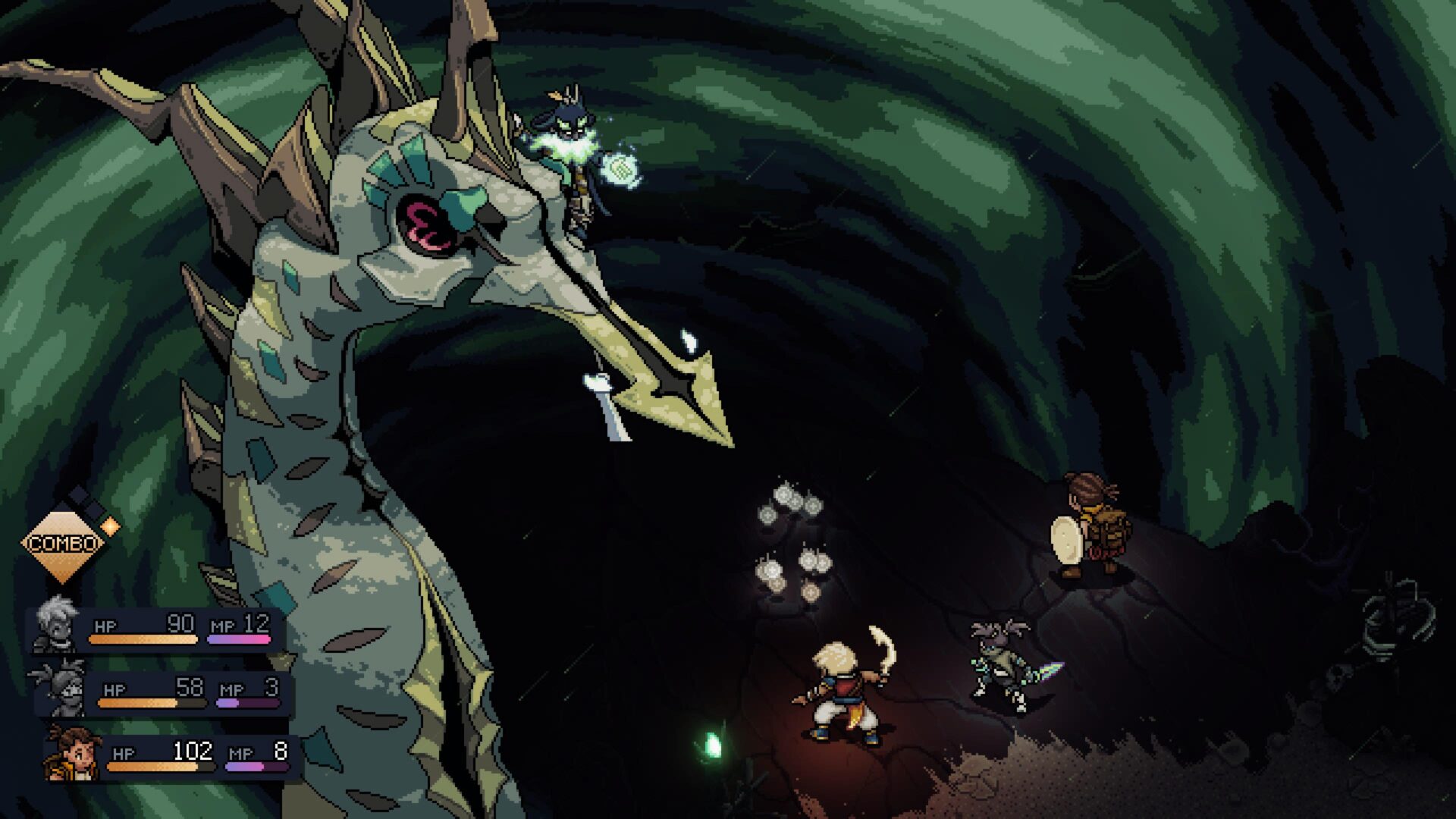As someone who was quite young at the time, it is hard for me to identify what the magic sauce of Super Nintendo RPGs of 1991-96 was. It was an era of video games when Chrono Trigger, Final Fantasy VI, Secret of Mana and Dragon Quest 5 & 6 were all released in the same span of years, there was a breakthrough. There was excellent pixel art, there was more bold storytelling, there were new ideas to the turn based systems, and there were a lot of people just enjoying RPGs. There’s something that’s hard to replicate about that era of role playing games that is missing from the modern 100 hour odysseys but still exists as a foundational memory for generations of RPG players.

Sea of Stars is as if you reached into the past and grabbed that underlying feeling and really channeled everything you had into making the 2023 version of that video game formula. Sea of Stars brilliantly feels like one of those Golden Age JRPGs of the Super Nintendo, but made with the benefits of today. On top of that, it’s unique, it’s heartfelt, and it’s so so fun to play in a time where there are tons of fun RPGs to play. Sea of Stars is different from all of them, and excellent in its own ways.
From the beginning, Sea of Stars’ story is framed around a sacrifice. Valere and Zale, blessed with lunar and solar-based superpowers related to their births on the Winter and Summer solstices, are separated from their childhood friend Garl and are locked away in a tower to train for ten years to become Solstice Warriors. Despite this strong background Zale and Valere struggle to develop as charages during the journey in comparison to later additions to the party like Garl, or the mysterious Pirate/Ninja Seraï, who are far more interesting and elevate the plot a lot more. I think there are some missed opportunities with characters broadly; I would have liked more time with characters just talking to one another, building up the tension and relationships so that when the biggest story beats happen, they’d hit even harder. Still, it feels like a more traditional approach. It feels classic and streamlined, and it helpsSea of Stars separate itself more from modern contemporaries.

I really like what Sea of Stars does story-wise, because it feels very relevant. It reads like a pandemic game to me. It deals a lot with trust, what it means to break trust, and earnest frustration with why the people with the power to change things seem to refuse to do the right thing, all themes that really resonated with me. Multiple crucial points of the story had me absolutely devastated and sobbing. For everything familiar in the larger narrative, something wonderfully earnest and to the point happened to surprise and delight me.
All of these are complemented by some of the most impressive and polished visuals of a pixel art video game I have ever seen. Sabotage’s previous game, The Messenger, leverages dueling 8bit and 16bit styles to create intricate backgrounds to great effect, but Sea of Stars just goes extremely hard into this unbelievable amount of detail in the world, characters, and every animation. There are too many moments of incredible animation to capture, but I wanted to include some as animated gifs that certainly won’t do the game justice, but show off just how much variety of visual presentation there is.




Then there is the soundtrack and this one is killer. Eric W. Brown works with Chrono Trigger composer Yasunori Mitsuda to make some simply legendary music. From the expected areas, like a beachy series of waterfalls, to underwater, to the desert, every necessary touchstone of a SNES game is here, but the surprises that come into the music as the game gets darker and weirder in the later chapters are just excellent. The boss-specific tracks are all so very good, and the amount of music here is just as surprising as the number of locales. There is just a ton packed in here, all of it very memorable, and some of the music even calls back to The Messenger and its soundtrack too.
Most RPGs live and die by their combat, and Sea of Stars not only lives, it thrives. It leans in the direction of the Mario RPGs, with action commands available through timed presses with every attack, requiring different timing for each character’s unique attacks and specials. It also throws in combo attacks, which don’t use MP but rather a sort of “special meter” you build by staggering opponents and landing action commands. Then the third and final pillar is “live mana,” which is effectively three charges of energy you get from just using basic attacks that you can absorb almost anytime to power up whatever your next move is, be it a big attack or a super-powered heal.

All of these systems are very basic, and introduced gradually through the first four hours of Sea of Stars, but continually become satisfying strategy-makers through dozens and dozens of hours of combat. Not only does each boss have some special mechanic or structure to it that makes it more of a unique fight, but with free party member switching almost any time, combat always feels like you have tons of options at any given moment. Maybe you have a boss that is weak to poison damage, but has three arms that will buff it each turn. You can use Zale and Garl to attack the arms and destroy them, build up some mana charges, then absorb them as Seraï and land an extra-strong poison attack with the additional charge. That or you could prepare one of the full-screen super moves or a combo attack. There is plenty of strategy with such a straightforward system, all the while new enemies are being introduced constantly, all with different attacks and weaknesses that require new timing to be learned all the time.
Sea of Stars is constantly adding fresh and fun ideas to its turn based battles, all while building on things you’re familiar with. Entering new areas is extremely fun, because you’re getting new music, new visuals, and new little puzzles with each enemy to solve. I felt this 40 hours later when I was wrapping up all the secret and optional areas at the end of the game.
You’ll go from one stop to the next with the perfect topper to any 90s-inspired RPG, the world map. Each area flows into the next, as you eventually travel from continent to continent, from the Coral Cascades, to the port town of Brisk and its lovely pirate music, to Wrath Island, the land of dark curses. Just as you start to feel the world is small, something changes, a new part of the world map opens, or puzzles on the map itself light the way to the next adventure.

All that care into the music and the visuals of each destination carries over to exploring them too. Not only are they full of little puzzles, secrets, and extra treasures to find, but you actually have to explore, interact, and maneuver your way through the world. It’s more than just finding keys and hitting buttons, and I am just so grateful for it. It was super fun cleaning up the enemies in an area and circling all around it to find hidden areas, things you didn’t know you could interact with, and optional little paths to secrets.
Truly, the environments are just so stellar, and it extends to walking around them, exploring them, fighting in them, and of course hearing each area’s different theme music.
Closing Comments:
Sea of Stars gets to be amongst that cherished few that feels like a game ripped right out of another era, with the benefits of time and modern design, and just so much love. It’s one of the most polished, fully-featured and jam-packed games I have played, and I was so happy to turn every corner, find every combo move, and explore every environment endlessly. The story, the experience, and the heart coming off of Sea of Stars is so potent, it rocked me emotionally. I loved every time I got to sit down and play this game, but left supremely satisfied by the end. It is a masterful RPG, video game, and indie title, and one that I would happily recommend to anyone and everyone.
This game was reviewed with a review code provided by Public Relations for Sabotage Studios, on a PlayStation 5 Digital console.


